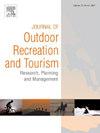Beyond size: Uncovering customer insights from small ski areas
IF 4.4
3区 管理学
Q1 HOSPITALITY, LEISURE, SPORT & TOURISM
Journal of Outdoor Recreation and Tourism-Research Planning and Management
Pub Date : 2025-07-02
DOI:10.1016/j.jort.2025.100913
引用次数: 0
Abstract
This study emphasizes customer decision-making processes associated with small ski areas, a sector increasingly affected by climate change, evolving customer preferences, and intensified market competition. While prior research has primarily concentrated on larger ski resorts, this study addresses a critical gap by focusing on the distinctive characteristics and challenges faced by smaller ski areas. Adopting a two-phase methodology, the research combines a preliminary quantitative survey with an in-depth qualitative exploration conducted in Austria. Through a choice experiment with skiers and interviews with visitors of small ski areas, the study identifies the key factors that shape customer preferences. Although larger ski areas are often perceived as more attractive due to their extensive facilities and greater perceived utility, smaller ski areas have distinct advantages, including ease of access, affordability, and a more relaxed, uncrowded atmosphere. These attributes are of particular value to day-trippers, who appreciate affordable lift ticket prices, less crowded slopes, and natural snow conditions, which can create a more intimate and enjoyable skiing experience. This study highlights the emotional bonds and sense of community that skiers often establish with smaller ski areas, thereby offering a more nuanced perspective to existing studies on ski area choice. These findings offer practical insights for small ski area operators, emphasizing the importance of leveraging their unique strengths to enhance customer satisfaction and sustain competitiveness in a challenging and evolving market. By addressing these dynamics, this study contributes to the broader understanding of customer behavior within the skiing industry and offers a foundation for targeted strategic initiatives.
Management implications
Small ski areas, often overlooked in market strategy, can boost competitiveness by leveraging their unique attributes—accessibility, affordability, and reduced crowding. Operators should target day-trippers and price-sensitive segments with flexible pricing, local partnerships, and authentic, low-stress experiences. Emotional place attachment and community ties are critical levers—fostering loyalty beyond size or infrastructure. Strategic investments in snow management, service quality, and regional pass integration can further enhance appeal and resilience in a climate-challenged and cost-sensitive environment.
超越规模:从小型滑雪场发现客户见解
该研究强调了与小型滑雪场相关的客户决策过程,这是一个日益受到气候变化、不断变化的客户偏好和加剧的市场竞争影响的行业。虽然之前的研究主要集中在大型滑雪场,但本研究通过关注小型滑雪场的独特特征和面临的挑战,解决了一个关键的差距。该研究采用两阶段方法,将初步定量调查与在奥地利进行的深入定性探索相结合。通过对滑雪者的选择实验和对小型滑雪场游客的采访,该研究确定了影响客户偏好的关键因素。虽然大型滑雪场通常因其广泛的设施和更大的实用性而被认为更具吸引力,但小型滑雪场具有明显的优势,包括易于进入,价格合理,以及更轻松,不拥挤的氛围。这些特点对一日游游客来说特别有价值,他们喜欢实惠的缆车票价,不那么拥挤的斜坡,以及自然的雪况,这些可以创造更亲密和愉快的滑雪体验。这项研究强调了滑雪者通常在较小的滑雪场建立的情感纽带和社区意识,从而为现有的滑雪场选择研究提供了更细致入微的视角。这些研究结果为小型滑雪场运营商提供了实用的见解,强调了利用其独特优势来提高客户满意度和在充满挑战和不断变化的市场中保持竞争力的重要性。通过解决这些动态,本研究有助于更广泛地了解滑雪行业内的客户行为,并为有针对性的战略举措提供基础。管理意义小型滑雪场,在市场战略中经常被忽视,可以通过利用其独特的属性-可达性,可负担性和减少拥挤来提高竞争力。运营商应该通过灵活的定价、本地合作伙伴关系以及真实、低压力的体验来瞄准一日游游客和价格敏感人群。情感上的地方依恋和社区关系是培养超越规模或基础设施的忠诚度的关键杠杆。在积雪管理、服务质量和区域通行证一体化方面的战略投资可以进一步增强在气候挑战和成本敏感环境中的吸引力和复原力。
本文章由计算机程序翻译,如有差异,请以英文原文为准。
求助全文
约1分钟内获得全文
求助全文
来源期刊

Journal of Outdoor Recreation and Tourism-Research Planning and Management
HOSPITALITY, LEISURE, SPORT & TOURISM-
CiteScore
6.70
自引率
5.30%
发文量
84
期刊介绍:
Journal of Outdoor Recreation and Tourism offers a dedicated outlet for research relevant to social sciences and natural resources. The journal publishes peer reviewed original research on all aspects of outdoor recreation planning and management, covering the entire spectrum of settings from wilderness to urban outdoor recreation opportunities. It also focuses on new products and findings in nature based tourism and park management. JORT is an interdisciplinary and transdisciplinary journal, articles may focus on any aspect of theory, method, or concept of outdoor recreation research, planning or management, and interdisciplinary work is especially welcome, and may be of a theoretical and/or a case study nature. Depending on the topic of investigation, articles may be positioned within one academic discipline, or draw from several disciplines in an integrative manner, with overarching relevance to social sciences and natural resources. JORT is international in scope and attracts scholars from all reaches of the world to facilitate the exchange of ideas. As such, the journal enhances understanding of scientific knowledge, empirical results, and practitioners'' needs. Therefore in JORT each article is accompanied by an executive summary, written by the editors or authors, highlighting the planning and management relevant aspects of the article.
 求助内容:
求助内容: 应助结果提醒方式:
应助结果提醒方式:


